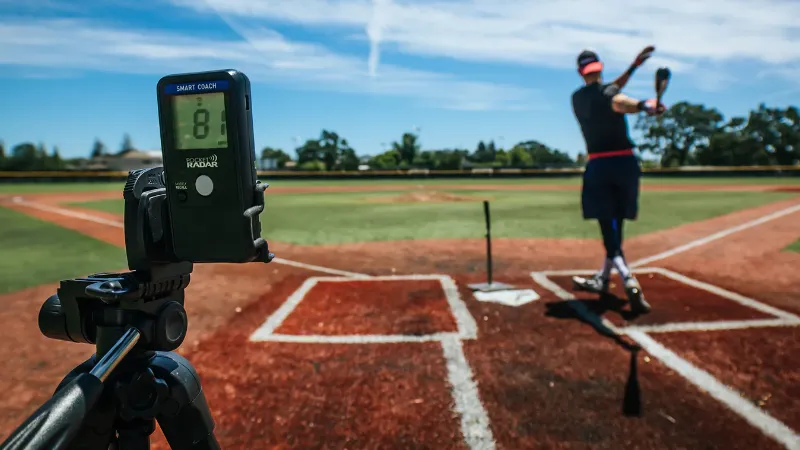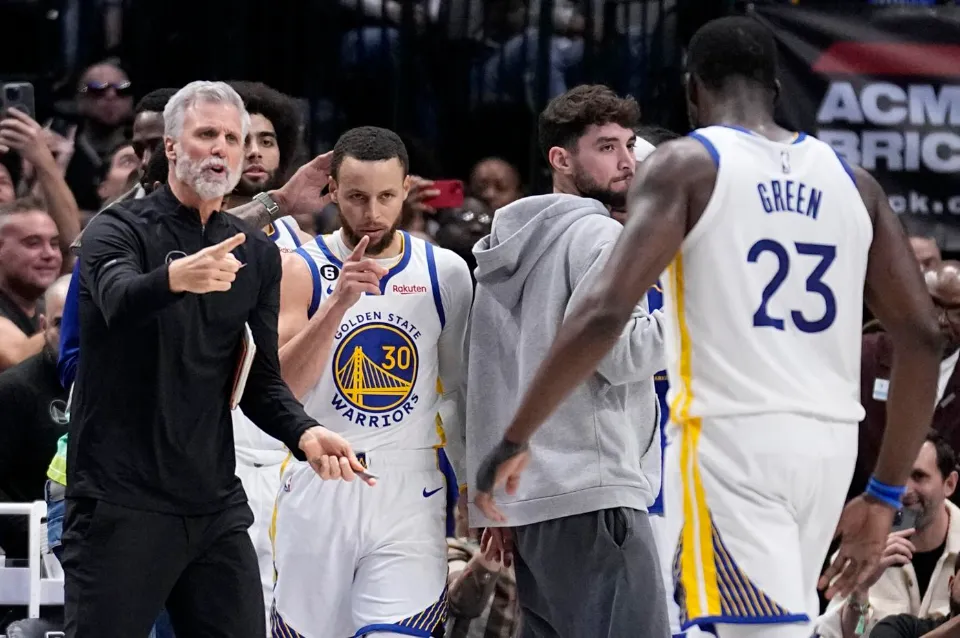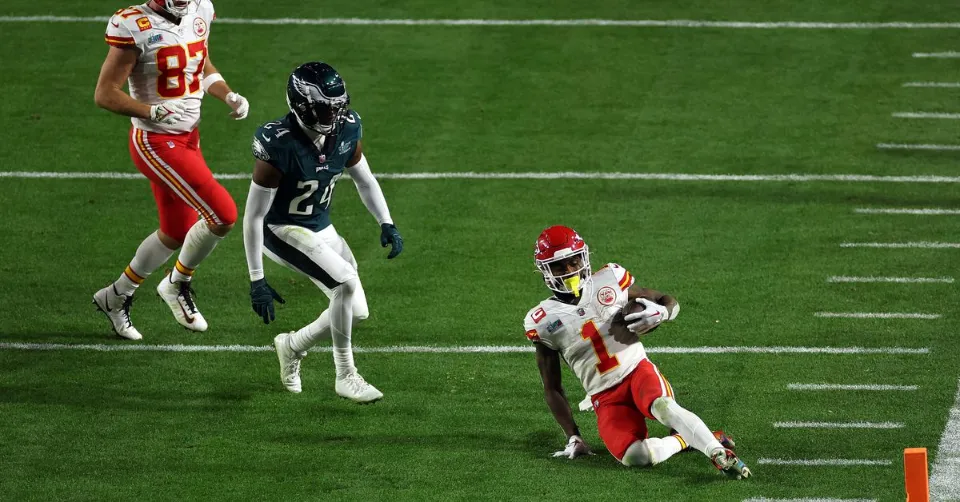What is Exit Velocity? the Ultimate Guide

Below will give you a specific explanation about what is exit velocity. We will also tell you how to increase exit velocity in baseball. Please read on.
In baseball, exit velocity refers to the speed of a ball as it leaves the bat. The further a baseball will travel or the better the chances are of getting a base hit, the faster the exit velocity. Batters (along with their coaches and parents) have been interested in raising the exit velocity ever since the velocities started being measured.
Keep reading.
Table of Contents
What is Exit Velocity?
A baseball or softball’s exit velocity, also known as exit speed, refers to how quickly it leaves the bat as soon as contact is made. Hard hit balls exit with a higher velocity than dribbled balls, as one might anticipate. Hardly hit balls are more likely to be hit than slower hit balls, as one might anticipate. The distance a batted ball will travel cannot be determined solely by exit velocity, despite the fact that it is king in the metric world. To know how far a baseball or softball has been hit, you will need to know:
- Exit Velocity
- Launch Angle
- Spin Rate
Still, exit velocity is an important metric when it comes to evaluating the skill of a hitter. Knowing how hard you typically hit the ball is a great first step in standing out to scouts and recruiters.

How Do I Find My Exit Velocity?
During a Rapsodo hitting session, Exit Velocity is measured on each swing and is visible in the app’s upper-left corner. Additionally, you can check it in your Rapsodo player app after each session. In the mobile app you can see your average, max, and hard-hit average (any ball hit within 10% of your max exit velocity).
What Should My Exit Velocity Be?
Several elements, including swing timing, swing mechanics, overall strength, launch angle, and age, will affect your average exit speed. The raw power and consistency of athletes typically rises as they mature and develop, resulting in stronger swings and faster exit speeds.
If you’re wondering “what should my exit velocity be“, keep in mind that every athlete is different. Numerous variables, such as strength, swing technique, and age, will affect your power.

How to Increase Exit Velocity in Baseball?
Chasing high exit velocity has turned into quite the quest for many players, coaches, and instructors, much like any other new measurement that indicates baseball success. Do high velocities naturally occur or is it possible for a hitter to take steps to raise his EV?
There isn’t a single, foolproof method to increase the speed at which baseballs leave bats. Some strategies might be effective for specific players, or it might take a combination of several strategies to produce desired results. Some people simply possess the strength in specific body regions from birth, resulting in naturally quick bat speeds and high exit velocities.
Here in no particular order are things others are doing in the attempt to increase exit velocity:
Bat Speed
Exit velocity is influenced by the bat’s speed when it makes contact with the baseball. To put it simply, lighter bats are swung at a faster bat speed. However, a fast bat speed coupled with a heavier bat does even more damage. (More on that is covered in the following subsection).
It matters a lot how quickly a player can move the barrel of the bat through the hitting zone. One study suggests that you can add about 10% to exit velocity if you swing a normal bat in play right after warming up with a heavier bat. This is commonplace in baseball anyway, either by swinging more than 1 bat at a time, or using a doughnut.
Of course, human hands and arms can move lighter bats through the hitting zone more quickly than they can propel a very heavy bat barrel toward the pitcher. The energy needed to drive the ball is produced by the combination of mass and bat speed.
Swinging a heavier bat might be a relatively quick way to increase a little exit velocity, but it might have a cost, as described here.
Bat Weight
Other baseball trainers use the formula velocity = bat speed + bat weight. As was previously mentioned, the key is to swing as quickly as possible while adding more mass (of wood or metal) to the baseball at contact.
A problem with simply using heavier bats is control. Too-heavy bats are often swung too late, so baseballs are fouled off or dribbled to the opposite field with little zing. A baseball player’s ability to handle heavy bats is improved as he grows stronger and bigger overall.
Strength Training
Baseball is one of the strangest sports when it comes to strength training the body for game play. The chest and biceps, two body parts where you might anticipate significant power in football players, aren’t always the primary determinant of how quickly you can swing a heavy bat. They help, but here are areas baseball trainers suggest to work hard to speed up that bat:
- Legs. Many youth baseball parents or coaches are not aware that a person’s thighs and hips play a significant role in how much power a hitter has. It explains why players with thin upper arms, like Dave Kingman, can hit long, soaring home runs. Strong thighs, whether acquired naturally or through exercise. Squats, lunges, deadlifts, leg presses, and leg curls are some exercises to increase leg strength. Some specialized cardio exercises, such as stair climbing, may also be beneficial.
- Core. All of the abdominal muscles that extend into the hip area, along with the chest and back muscles, make up the core of a body. Simply put, a lot of things there contribute to the violent twisting motion that hitting entails. Baseball players should routinely try medicine ball rotations and tosses as they are very effective in this regard. Other actions include sit ups, crunches, planks, push-ups,
- Forearms. During a swing, the forearms and hands receive the final portion of the human body’s power transfer. Strong forearms are essential for a secure grip at the point of contact as well as for adding additional weight to an object being swung forward. They assist in enhancing control, which raises contact and solid contact raises exit velocities. Try the following exercises: wrist curls, finger curls, squeezing squishy balls (tennis or racquet balls are used most frequently), and reverse wrist curls.

FAQs
What Determines Exit Velocity?
Your average exit speed will depend on a few factors: swing timing, swing mechanics, your overall strength, launch angle and age. Athletes typically gain raw power and consistency as they mature, which results in stronger swings and faster exit speeds.
What is a Good Exit Velocity for a 17 Year Old?
Baseball in high school (60–80 mph). Baseball played in colleges (70-90 mph). Pro baseball (using wood, 80-100). Little League Softball (40–60 mph).
Summary: What is Exit Velocity?
Exit Velocity (EV) is a more recent baseball term, as statisticians continue to delve deeper in their never-ending quest to determine the most accurate way to assess pitchers’ and hitters’ performances. The Batted Ball Distance (DST), Projected Home Run Distance (HR-DST), Launch Angle (LA), and Batted Ball Events (BBE) are a group of new measurements in the hitting world.
Batted Ball Events, the final measurement, are the on-field activities used to gauge Major League Baseball players’ exit velocities. These are balls that are struck and end up being outs, hits, or errors.
Baseball coaches and instructors are frequently asked how to enhance or increase EV because high exit velocities of baseballs off bats translate to hitting success, such as more hits or longer drives. Baseball broadcasts frequently discuss exit velocity (EV) immediately following a strong hit, which has made the term popular.
Similar to how many pitchers fell more in love with their throws’ velocity than with control and command, Not all hitting stats revolve around exit velocity. A high EV does, however, typically indicate a successful hit.







